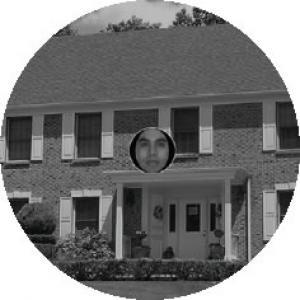Wearing pink eyeglasses helps to observe more
A study by the University of Toronto provides the first direct evidence that human mood really impacts the way the vision system filters sensory experiences, and sees the world through pink eyeglasses. has a real effect on the resulting image, not just a metaphor in literature.
'Good or bad psychological states can change the way the cortex works and how we see things,' said Adam Anderson, a professor of psychology at the University of Toronto. 'In particular, our research shows that when in a good psychological state, the cortex will receive more information, while the poor psychological state leads to a narrow view.' The results of the study are published in the Journal of Neuroscience.
The research team from the university used a magnetic resonance imaging method to test how our visual cortex processes sensory information when in mind states good, bad, and neutral They found that wearing pink eyeglasses corresponding to a good psychological state would not see the colors well but would better cover the whole scene than usual.

People with pink glasses can see more things.(Photo: University of Toronto provided)
Initially researchers showed the subjects a series of images to create different psychological states. These people then see a 'double' image, with a face in the middle, surrounded by wider scenes, such as a building. To focus attention on the central face, the subject of study is required to determine the gender of the person with this face.When in a bad mood, the subject does not process the image of the surrounding landscape.
However, when looking at the same images in a good mood, they actually gained more information - they saw both the face image in the center as well as the image of the surrounding house.
'When people are in a good mood, people can handle more visual objects, which sounds perfectly good, but it is actually a disadvantage,' said Taylor Schmitz, a graduate student at Anderson. and members of the study author group, said. 'A good mood reinforces the' window 'size from which we look at the world. The good part of this is that we can see things in a more comprehensive, broader way. The downside is that it can lead to distraction, distraction when a person has to perform rigorous tasks, requiring a narrow range of focus, for example when operating dangerous machines, or checking onions. management of passengers at the airport. Bad moods, on the other hand, can help us focus on the focus, avoiding receiving information about things outside of our direct focus. '
This work is supported by the Canadian Health Research Institute.
Refer:
Taylor W. Schmitz, Eve De Rosa, and Adam K. Anderson.Opposing Influences of Affective State Valence on Visual Cortical Encoding.Journal of Neuroscience, 2009;29 (22): 7199 DOI: 10.1523 / JNEUROSCI.5387-08.2009
- Learn eyeglasses through the ages
- How to distinguish Vietnamese pink and standard Chinese pink without correction
- Eyeglasses designed exclusively for dieters
- Really, there is no pink?
- Things to remember when eating persimmons
- 'Pink noise' enhances deep sleep
- When glasses combine with electronic technology
- Discovered strange pink elephant in Thailand
- Discover the world's most mysterious pink leopard
- Variety of animals that we know little about
- Things you don't know about Himalayan pink salt
- Tonight, a unique Pink Moon will appear
 'Fine laughs' - Scary and painful torture in ancient times
'Fine laughs' - Scary and painful torture in ancient times The sequence of numbers 142857 of the Egyptian pyramids is known as the strangest number in the world - Why?
The sequence of numbers 142857 of the Egyptian pyramids is known as the strangest number in the world - Why? History of the iron
History of the iron What is alum?
What is alum?